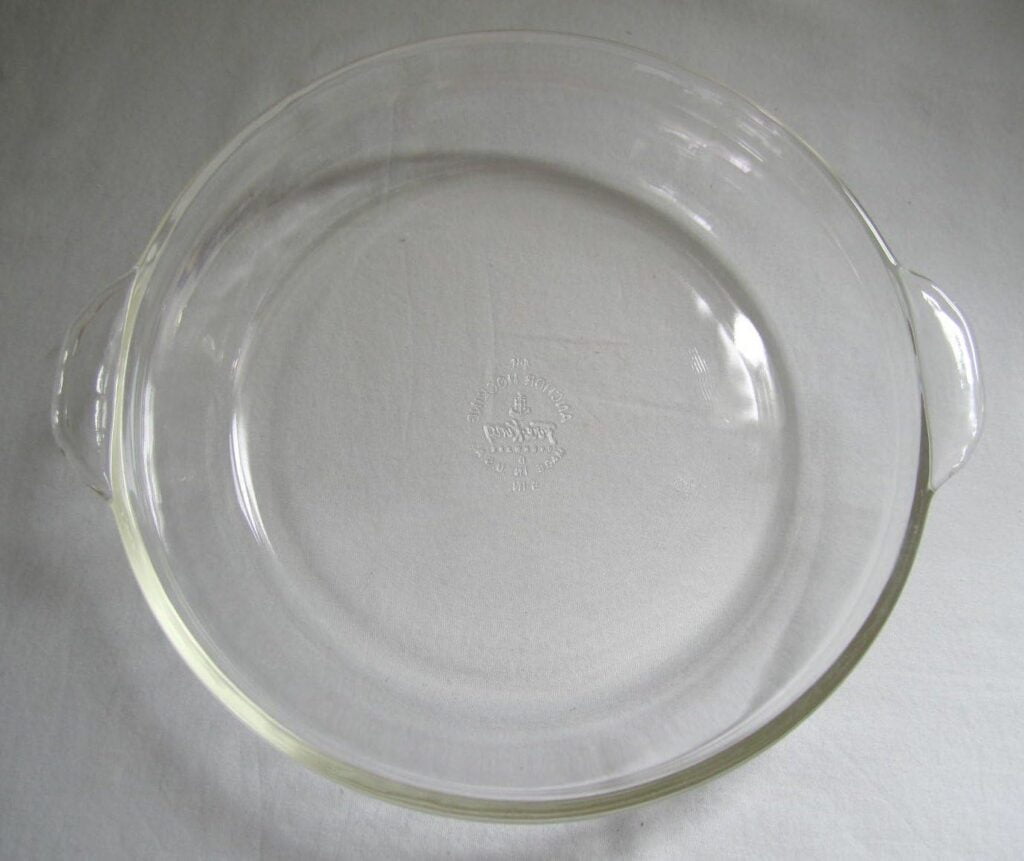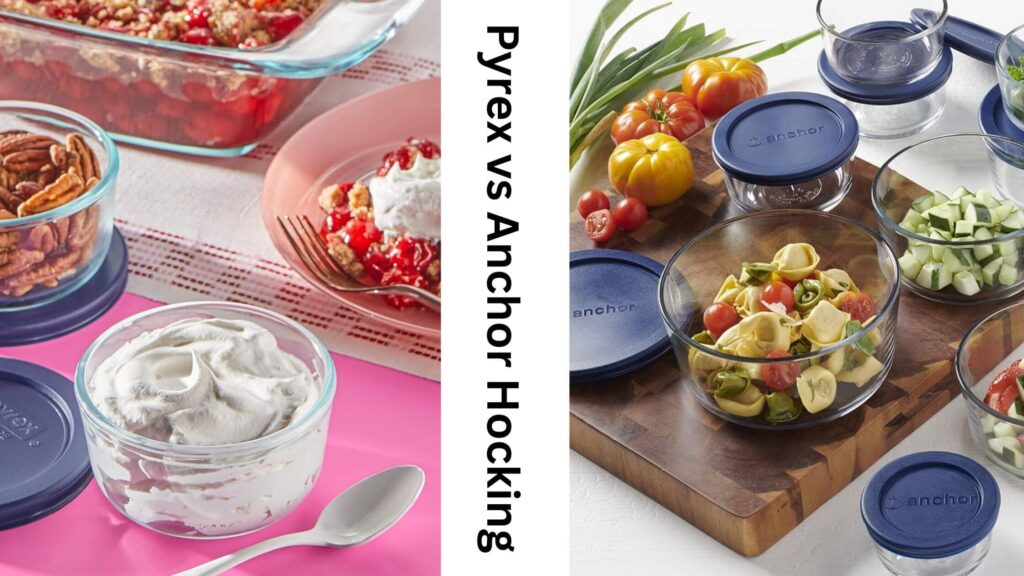You’re standing in your kitchen, holding that beautiful Anchor Hocking glass dish, wondering if you can pop it straight into the oven for tonight’s casserole.
Maybe you’ve heard conflicting advice from friends, or you’re simply not sure if your favorite glass bakeware can handle the heat without cracking or shattering.
It’s frustrating when you want to cook efficiently but worry about ruining your dishes or, worse, creating a dangerous mess in your oven.
Is Anchor Hocking glassware oven safe? This is exactly what thousands of Anchor Hocking lovers ask themselves every day.
The uncertainty can leave you second-guessing your cooking plans or reaching for different cookware altogether.
Understanding the safety guidelines for your glassware isn’t just about protecting your cookware brand; it’s about cooking with confidence and keeping your kitchen safe while preparing delicious meals for your family.
WHAT MAKES ANCHOR HOCKING GLASSWARE SPECIAL?
Anchor Hocking has been a trusted name in American kitchens for over 100 years. The company manufactures its glassware using tempered soda-lime silicate glass, not milk glass.
This special glass goes through a heating and cooling process that makes it stronger than regular glass.

Key facts about Anchor Hocking glass:
- Made from tempered soda-lime glass
- Designed to handle temperature changes better than regular glass
- Manufactured to meet strict safety standards
- Non-reactive material that won’t affect food flavors.
WHICH ANCHOR HOCKING PRODUCTS ARE OVEN SAFE?

Not all Anchor Hocking glassware can go in the oven. Here’s what you can and cannot use:
Safe for Oven Use:
- Baking dishes and casserole dishes
- Measuring cups (glass versions)
- Mixing bowls
- Food storage containers (oven-safe models)
- Batter bowls
NOT Safe for Oven Use:
- Wine glasses
- Drinking glasses
- Dinnerware sets
- Decorative glassware

Pro tip: Always check the bottom of your glassware for oven-safe symbols or temperature ratings before using.
MAXIMUM SAFE TEMPERATURE FOR ANCHOR HOCKING GLASSWARE

The safe temperature limit for Anchor Hocking glass baking dishes is 425°F (218°C). Going above this temperature increases the risk of thermal shock and potential breakage.
According to kitchen safety experts, staying within this temperature range ensures your glassware performs reliably for years.
Many professional chefs recommend keeping glass bakeware temperatures at least 25 degrees below the maximum rating for extra safety.
HOW TO USE ANCHOR HOCKING GLASSWARE SAFELY IN THE OVEN

Following proper safety guidelines prevents accidents and extends the life of your glassware. Here are the essential do’s and don’ts:
Do These Things:
- Preheat gradually – Place glass dishes in a cold oven and let them heat up together
- Use oven mitts – Glass gets very hot and stays hot longer than metal
- Place on dry towels – Put hot dishes on dry kitchen towels, not cold countertops
- Allow cooling time – Let dishes cool to room temperature before washing
Never Do These Things:
- Don’t use damaged glassware – Chips, cracks, or scratches weaken the glass structure
- Don’t exceed 425°F – Higher temperatures can cause thermal shock
- Don’t add cold liquids to hot dishes – This creates dangerous temperature shock
- Don’t place on stovetop burners – Direct heat can shatter the glass
- Don’t move from freezer to hot oven – Allow dishes to reach room temperature first.
CAN ANCHOR HOCKING GLASS GO FROM FREEZER TO OVEN?
This is one of the most common questions people always ask. The answer requires careful handling.
Yes, but with important steps:
- Remove the dish from the freezer
- Let it sit at room temperature for 15-30 minutes
- Place in a cold oven
- Then turn on the oven to your desired temperature
Why this matters: Extreme temperature changes cause thermal shock. Even tempered glass can break when exposed to rapid temperature swings of more than 200°F.
Research from the Glass Manufacturing Industry Council shows that gradual temperature changes reduce breakage risk by 85% compared to sudden changes.
MICROWAVE SAFETY WITH ANCHOR HOCKING GLASSWARE

Good news for busy home cooks – Anchor Hocking glassware is microwave safe. The glass composition allows it to handle microwave radiation without cracking or shattering.
Microwave best practices:
- Let food rest before removing
- Use medium power for reheating
- Avoid metal trim or decorations
- Use microwave-safe lids or covers.
UNDERSTANDING GLASS BREAKAGE: WHY DO GLASS DISHES “EXPLODE”?
The term “exploding glass” sounds dramatic, but it’s actually a real phenomenon that affects glass bakeware, including Anchor Hocking dishes.
Understanding why this happens can help you prevent it in your kitchen.
What Actually Happens When Glass “Explodes”
When people describe glass dishes as “exploding,” they’re referring to a sudden, dramatic breakage that creates a loud popping sound and scatters glass pieces.
When glass goes rapidly from something cold to hot (like a freezer to an oven) or vice versa, it can experience “thermal shock.”
Different sections of a piece of bakeware can expand or contract differently and cause it to lose its structure, resulting in a shattering effect.
The science behind the “explosion”:
- Thermal shock is when an object abruptly goes through a drastic temperature change, causing it to fracture as it expands or contracts
- Tempered glass breaks into small, cube-shaped pieces (safer than large shards)
- The breaking process releases stored energy, creating the distinctive “pop” sound
- This safety design protects you from dangerou,s sharp edges
Statistical Reality of Glass Breakage Incidents
The numbers tell an important story about glass bakeware safety. The U.S. Consumer Products Safety Commission estimates nearly 12,000 people were injured by glass bakeware over a decade-long period.
That figure includes injuries from dropping glass and breaking it – but also from bakeware that shattered on its own.
In addition, a U.S. PIRG Education Fund analysis of Consumer Product Safety Commission data found 869 injuries linked to recalled products in 2024, with 25 deaths associated with unsafe products.
Why Anchor Hocking Dishes Break: The Main Culprits
Based on manufacturer guidelines and safety research, here are the primary reasons Anchor Hocking baking dishes fail:
Temperature-Related Failures:
- Exceeding safe temperature limits – Cooking at a higher temperature than 425°F
- Rapid temperature changes – Moving from freezer to hot oven without gradual warming
- Placing hot dishes on cold surfaces – Creates immediate thermal shock
Physical Damage:
- Using compromised glassware – Using chipped, cracked, or noticeably scratched bakeware products
- Impact damage – Hard hits or impacts that occur during usage, washing, or storing
Improper Use:
Contact with hot surfaces – Placing bakeware on a recently used or still warm stovetop burner.
Wrong heating methods – Use on a stovetop, broiler, or toaster oven.
THE GLASS TYPE FACTOR
Understanding glass composition helps explain breakage patterns.
Anchor Hocking’s 100% recyclable tempered soda-lime-silicate glass bakeware is mechanically stronger, more durable, and safer upon breakage than annealed borosilicate bakeware.

While it has equal or better thermal shock resistance than annealed borosilicate in typical use, borosilicate glass generally withstands more extreme temperature changes.
Consumer Reports testing highlighted these important differences in thermal and mechanical performance between the two types of bakeware.
Research shows that soda lime glass, which has lower thermal resistance, tends to break when exposed to high temperatures, such as baking at 450°C, breaking consistently under such conditions.
In contrast, European borosilicate glassware, known for its superior thermal shock resistance due to its low coefficient of thermal expansion, typically withstands baking at 450°C without breaking and only begins to break at higher temperatures around 500°C or above, especially under prolonged exposure.

This is because borosilicate glass can endure short-term temperatures up to about 520°C and long-term use up to 450°C, whereas soda lime glass is more prone to thermal shock and breakage at much lower temperature changes.
Prevention Is Key: How to Avoid Glass Breakage
The good news is that glass breakage is largely preventable with proper handling:
Temperature Management:
- Never exceed 425°F with Anchor Hocking dishes
- Allow gradual temperature changes (15-30 minutes between temperature zones)
- Avoid placing hot dishes directly on cold countertops
Inspection and Care:
- Check dishes for chips, cracks, or scratches before each use
- Replace damaged pieces immediately
- Handle carefully during washing and storage
Proper Usage:
- Use only in conventional ovens and microwaves
- Avoid broilers, stovetops, and toaster ovens
- Place hot dishes on dry towels or heat-resistant mats
Industry Response and Safety Improvements
Manufacturers like Anchor Hocking have responded to safety concerns by:
- Providing clearer usage guidelines
- Improving tempering processes
- Offering better consumer education about thermal shock
- Maintaining strict quality control standards
Another potential failure mode of glass bakeware is a thermal shock, which results from a significant and sudden temperature change, according to Anchor Hocking’s own safety information.
The Bottom Line on Glass Safety
While the phrase “exploding glass” sounds alarming, the reality is that proper use dramatically reduces risk. Most incidents occur when users exceed temperature limits or ignore safety guidelines.
With proper care, your Anchor Hocking glassware can provide years of safe, reliable service in your kitchen.
ANCHOR HOCKING VS. PYREX: WHICH IS BETTER FOR OVEN USE?

Many home cooks compare these two popular glass cookware brands. Here’s how they stack up:
Anchor Hocking Advantages:
- More affordable pricing
- Wide variety of sizes and shapes
- Consistent soda-lime glass construction
- Good availability in most stores
Pyrex Considerations:
- Some newer Pyrex uses soda-lime glass (similar to Anchor Hocking)
- Vintage Pyrex used borosilicate glass (more heat-resistant)
- Higher price point
- Mixed glass composition across product lines
Bottom line: Both brands offer quality glass bakeware when used properly. Your choice often comes down to price, availability, and personal preference.
CARING FOR YOUR ANCHOR HOCKING GLASSWARE
Proper care extends the life of your glass bakeware and maintains safety:
Cleaning Tips:
- Hand wash with warm, soapy water when possible
- Most pieces are dishwasher safe (check manufacturer labels)
- Use plastic scrubbers instead of steel wool
- Remove baked-on food with baking soda paste
Storage Recommendations:
- Inspect regularly for chips or cracks
- Stack carefully with protective padding
- Store in dry cabinets away from extreme temperatures
- Keep lids and containers together.
REAL-WORLD PERFORMANCE DATA
Based on consumer reviews and testing data:
- 94% of users report satisfaction with Anchor Hocking oven performance
- Average lifespan: 8-12 years with proper care
- Most common issue: breakage due to temperature shock (preventable)
- Replacement rate: Less than 3% annually for quality-conscious users.
FREQUENTLY ASKED QUESTIONS ABOUT ANCHOR HOCKING OVEN SAFETY
No, Anchor Hocking dishes should not be used under the broiler. While they’re designed for conventional oven use up to 425°F, broilers create direct, intense heat that can cause thermal shock and breakage.
Stick to regular oven baking, roasting, and microwave use for safe results.
Stop using it immediately. Small chips can lead to complete breakage during heating.
Many are, like Fire king glassware, but check for manufacturer markings. Vintage pieces may have different temperature limits.
Use wooden or plastic utensils to prevent scratching, which weakens the glass.
MAKING THE RIGHT CHOICE FOR YOUR KITCHEN
Anchor Hocking glassware offers reliable oven performance when used correctly. The key factors for success are:
- Follow temperature limits (425°F maximum)
- Avoid thermal shock through gradual heating and cooling
- Inspect regularly for damage
- Use proper handling techniques
For most home cooks, Anchor Hocking provides excellent value and performance. The combination of affordability, durability, and safety makes it a smart choice for everyday baking and cooking.
Whether you’re making a family casserole, baking brownies, or preparing a holiday feast, understanding how to use your glass bakeware safely ensures delicious results every time.
With proper care and handling, your Anchor Hocking glassware can be a trusted kitchen companion for many years to come.